#commodore game graphics
Text
Yes Prime Minister: The Computer Game (C64/DOS, Oxford Digital Enterprises, 1987/1988)
The game of the British comedy TV series. You can play it in your browser here, and read a digital manual for the C64 version here. For the DOS version, assume all disks are already inserted.
Tip: Sir Humphrey is the Cabinet Secretary. The protagonist, Prime Minister Jim Hacker, loves finishing his sentences.


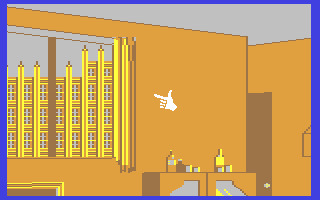

#internet archive#in-browser#dos#dos games#c64#commodore 64#game#games#video game#video games#videogame#videogames#computer game#computer games#obscure games#simulation game#simulation games#licensed games#yes minister#yes prime minister#retro games#retro gaming#retro graphics#1987#1988
78 notes
·
View notes
Text
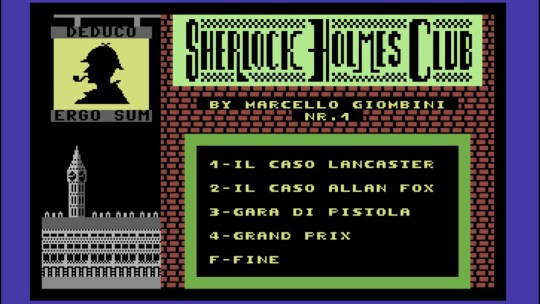




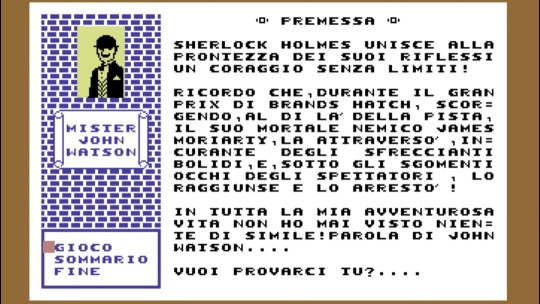
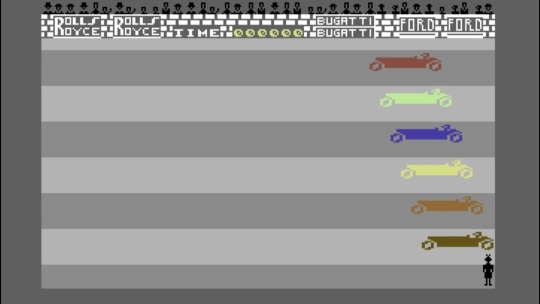
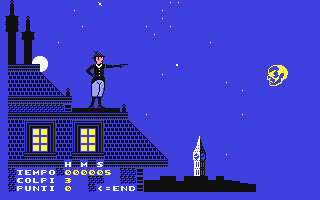
"Sherlock Holmes Club" for the Commodore 64 by Marcello Giombini (1986)
#i tried to play through it but unfortunately i do not speak italian yet#i enjoy the graphics though#marcello giombini#sherlock holmes club#video game#sherlock holmes game#vintage video game#commodore 64#sherlock holmes#holmes
27 notes
·
View notes
Text
youtube
On 21 April 2023, a British man crossed the event horizon of autism.
7 notes
·
View notes
Text

Logo Design for PerGioco Point :)
I accept graphic and illustrations commissions! Let me know if you're interested. 🖤
#illustration#logo design#digital art#commodore 64#retro games#retro#graphic design#adobe illustrator#graphic art
2 notes
·
View notes
Text
Bruce Lee: A Vintage Martial Arts Odyssey on Atari 8-bit - Exploring the Classic Gem of the '80s
In the annals of classic gaming, few titles hold the nostalgic weight and martial arts flair quite like Bruce Lee. Released in 1984 for the Atari 8-bit family, this platform game, penned by Ron J. Fortier and brought to life by Datasoft, remains a timeless gem. Let’s embark on a journey through the chambers of a wizard’s tower, exploring the graphics, gameplay, and lasting impact of Bruce…

View On WordPress
#&039;80s video games#Atari 8-bit#Bruce Lee game#classic chiptune music#Commodore 64#gaming nostalgia#historical video games.#martial arts platformer#multiplayer gaming#nostalgic graphics#retro gaming
3 notes
·
View notes
Video
youtube
How "oldschool" graphics worked Part 1 - Commodore and Nintendo
#youtube#How oldschool graphics worked#Commodore and Nintendo#FC#NES#Commodore#Retro Game#Nostalgic Game#Very Good#Very Happy#Sharing The Happinesses#Very Happy Very Happy!!!!#Share Happy#Sharing Happiness
0 notes
Video
youtube
Back Cover to AI Art S2E54 - Psycho
Older video games were notorious for back cover descriptions that have nothing to do with the game so let's see what a text-to-image generator makes of these descriptions. Season 2 sees an increase in art creations for each game up from 1 in the first season to 6 for the second season
1. Intro - 00:00
2. Back Cover and Text Description - 00:10
3. Creation 1 - 00:30
4. Creation 2 - 00:50
5. Creation 3 - 01:10
6. Creation 4 - 01:30
7. Creation 5 - 01:50
8. Creation 6 - 02:10
9. Outro – 02:30
Released in 1988 for DOS and the Commodore 64, Psycho is very loosely based on the 1960s Alfred Hitchcock film of the same name, developed by Starsoft Development Laboratories, Psycho is a graphic detective adventure horror game, which uses a key-driven verb interface.
The following year in 1989 the game would be ported to the Amiga and Atari ST, the game was not well-received going by the handful of reviews that have survived since its release 35 years ago.
For more Back Cover to AI Art videos check out these playlists
Season 1 of Back Cover to AI Art
https://www.youtube.com/playlist?list=PLFJOZYl1h1CGhd82prEQGWAVxY3wuQlx3
Season 2 of Back Cover to AI Art
https://www.youtube.com/playlist?list=PLFJOZYl1h1CEdLNgql_n-7b20wZwo_yAD
#youtube#psycho#ai#80s games#80s gaming#back cover#ms-dos#commodore 64#generative ai#starsoft development laboratories#graphic detective#graphic adventure#ai artworks#horror#amiga#ai art community#atari st#ai art#ai generated#artificial intelligence#digital art#ai art generation#generative art#machine learning
0 notes
Text
youtube
#Desert course#PEACHES#Lotus 2#1991#Amiga#Gremling Graphics#Gremlin#Retrogaming#Commodore#racing computer game#16 bit#16 bit gaming#childhood#childhood memories#Youtube
0 notes
Text


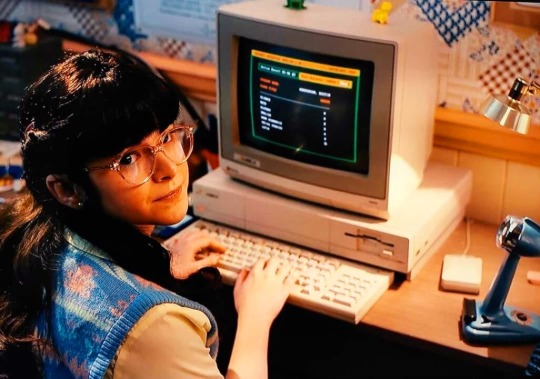


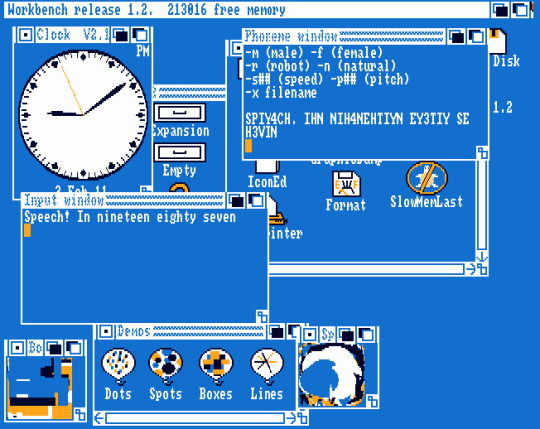
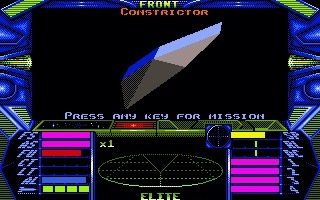
🇺🇸 Let's embark on a journey through the captivating history and unique features of the Commodore Amiga 1000—a groundbreaking computer that left an indelible mark on the world of computing.
💾 Introduced in 1985, the Commodore Amiga 1000 heralded a new era of multimedia computing, boasting advanced graphics and audio capabilities ahead of its time. It quickly became a favorite among creative professionals and gaming enthusiasts.
💻 Designed by Jay Miner and his team, the Amiga 1000 featured revolutionary architecture with custom chips for graphics and sound, offering unprecedented performance. Powered by a 7.14 MHz Motorola 68000 CPU, it also ran the unique AmigaOS, renowned for its multitasking capabilities and graphical user interface.
🐕🦺 The Amiga 1000's case design was inspired by a lunchbox, giving it a distinctive, compact form. Notably, it's the only model featuring the short-lived Amiga check-mark logo. The case's interior even bears the engraved signatures of the Amiga designers, including Jay Miner and his dog Mitchy's paw print.
🎮 Standout features included the ability to display up to 4096 colors and play stereo sound—unmatched by other personal computers of its time. The Amiga 1000 left a lasting impact, influencing digital art, animation, and video editing industries.
🕹️ A powerhouse for multimedia production, the Amiga 1000 enabled creative exploration for artists, musicians, and video creators. It was also a gaming pioneer, with iconic titles like "Defender of the Crown" and "Lemmings" showcasing its graphical prowess.
🎨 In the summer of 1985, Andy Warhol received his first Amiga 1000 home computer from Commodore International and became an enthusiastic brand ambassador. He famously created digital artworks, including a portrait of Debbie Harry using ProPaint software onstage at Lincoln Center, demonstrating the Amiga's capabilities to a live audience.
🌟 Today, the Commodore Amiga 1000 remains a beloved classic among retro computing enthusiasts, embodying the spirit of innovation and creativity of the 1980s computing era. Let's celebrate this iconic piece of computing history!
#techtime chronicles#old technology#tech#technology#old tech#technews#information technology#corporations#electronics#commodore#commodore amiga#amiga#computer science#computing#computers#computer#andy warhol#defender of the crown#lemmings#retro gaming#gaming#video games#software#hardware#amigaos#multimedia#motorola#jay miner#debbie harry#blondie
160 notes
·
View notes
Text




If you had a Commodore 64, you were guaranteed to have 2 racing games in your collection: Pole Position and Out Run. Released to arcades in 1988 by Sega, nice graphics, gameplay and a bangin' soundtrack (which I've treated you to above!) helped to quickly make it popular, resulting in a conversion to multiple platforms, the C64 port being picked up by U.S. Gold. The cars in the game are modeled after their real life counterparts, a 1972 Volkswagen Beetle, 1971 Chevrolet Corvette, 1985 Porsche 911, and a 1985 BMW 325i Cabriolet E30. The first release of Out Run also included a cassette of the music from the original arcade version.
72 notes
·
View notes
Text
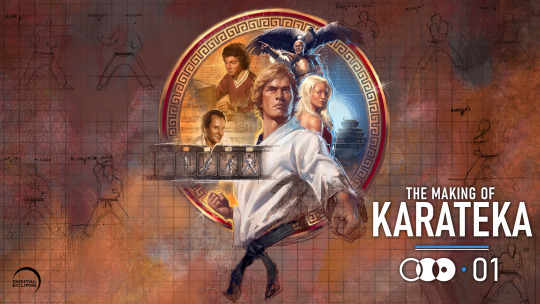
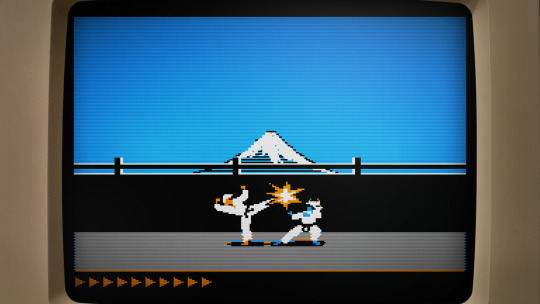
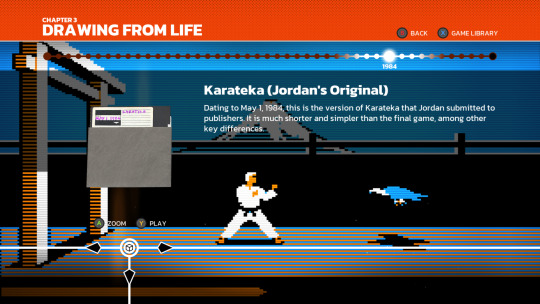


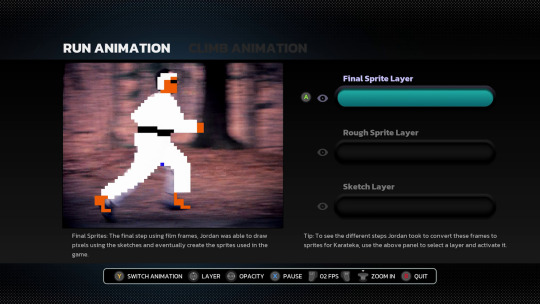
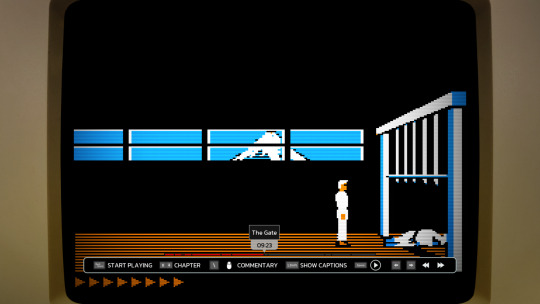
I never played Karateka in the 80s, but as a big fan of Prince of Persia and Jordan Mechner's journals, I was stoked to hear that an interactive documentary about Jordan's prototypical cinematic platformer was in the works by Digital Eclipse.
Released this week, The Making of Karateka on the surface looks like any other game you buy through Steam ($20, Windows-only), GOG, or whichever favorite store or console you prefer (available also for Xbox, PS4/5, Switch). Once the thing loads though, you really get 3 things: a documentary, the original Karateka, and a new remaster.
The documentary part is an audio-visual slideshow retelling Jordan's development story starting with his teenage years pitching his earlier title Deathbounce to the publishing house Brøderbund. It's an interesting look into the iterative process, seen through correspondence letters, journal entries, and many playable builds at various stages of completion. After we reach the eventual rejection of that title, Jordan comes back with a prototype of a visual-narrative experience unseen on home computers. We get to follow Karateka's full life cycle from pre- to post-production, ending with the conception of its sequel (which eventually turned into Prince of Persia). It's a real treasure trove! Fellow pixel artists will appreciate the many graph-paper sketches and interactive overlays of final game sprites compared to rotoscoped outlines and filmed footage. There are also video segments, from a comprehensive breakdown of the music to interviews with other developers reflecting on the impact Jordan's games had on their careers. You'll even encounter a fan letter signed by the one and only "John Romero, Disciple of the Great Jordan and worshipper of the Magnificent Mechner!" (I kid you not, you can't make this stuff up).
Perhaps just as crucial for an interactive documentary like this, you can launch any of the floppy disks in the emulator, trying out various iterations and ports of Karateka.

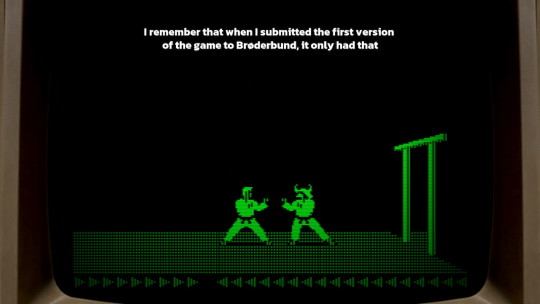
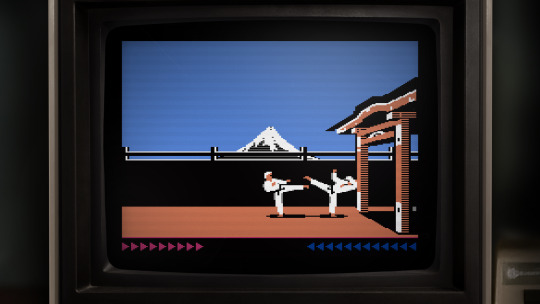
The emulation is fantastic and lets you fiddle with display settings (monochrome or color display, scanlines, pixel perfect or zoomed) as well as enhance the frame rate. You can even rewind the many deaths you will face if you've never played the game before (like me). If you spend some more time obsessing over the weird artifacts of the Apple II hi-res graphics, you might even go down the rabbit hole of realizing that on the Apple II you didn't really paint colors as much as you used different monochrome dithering patterns that the graphics display would then turn into 4 different hues. A fascinating learning experience if you include some of your own research online!
youtube
Add to this the Commodore 64 and the Atari 8-bit versions to compare how the graphics got adapted across the earlier ports and you have a nice way to relieve the mid-80s with a bit of help from modern emulation (I did beat the C64 version without rewinding though!). I'd love to see more art from the other remakes, especially the 16-bit Atari ST port, but I understand their decision to omit playable versions of those due to the lower quality on the gameplay side of the translations.
This brings us to the final part of the package, the modern remaster. Unlike the 2012 complete reimagining of the game (with 3D graphics and all), Digital Eclipse approached the remake as the ultimate port of the original to an imaginary system along the lines of a 90s VGA PC.

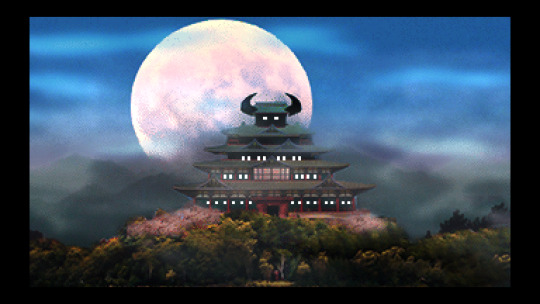


It's well done. Some of the fully-redrawn scenes are a bit overpainted for my taste (I'd prefer a pixel art rendition of the castle than a blurry photographic collage, although there were many games in the 90s that did take this approach), but the in-game graphics are really in style, including the smooth animations that are like one would imagine granted a beefier CPU. It's also a sort of director's cut with previously unseen scenes added, in particular, the battle with the leopard as a clever action-puzzle in the middle. The AI is unfortunately even less challenging than Jordan's implementation. As great as the 6-move fighting system could have been, you yet again resort to simply kicking away opponents as they tirelessly crawl into your range. There isn't even the nuance from the original where you were the one who had to approach some enemies with skilled timing. On the other hand, you now have optional goals and achievements that make the repetitive/easy combat work in your favor (stringing various combos, beating opponents or the level under a time limit …). As the Digital Eclipse president Mike Mika admits at the end of the welcome commentary mode, they didn't manage to achieve their perfect port, but they did come close.
In conclusion, I thoroughly enjoyed playing both the original as well as the remake and while the combat system lacks any sort of depth beneath its stunning animations, Karateka is instead a monumental experience for its presentation. Big characters with personality and realistic motion are displayed through cinematic camera cuts and story vignettes (3 years before Ron Gilbert came up with the word "cutscene"). There are details like animating the unfortunate falling off the cliff at the start of the game, or respectfully bowing to the first guard as they bow in return. Jordan's creative work is precious and worth the attention this release gifts it.
I highly recommend The Making of Karateka to all retro gamers and/or game developers for its immersive documentation which provides an experience that goes beyond the usual video documentaries. It's interactive—just like the subject it's talking about—something I want to see more in the future. And if the $20 by any chance seems high to you, consider that the original retailed at $35 (and that was in 1984 dollars).
youtube
77 notes
·
View notes
Text
Tass Times in Tonetown (Apple II/Apple IIgs/C64/DOS (actually PC Booter)/Classic Mac, Interplay, 1986)
You can play it in your browser here.
To play the Apple II version, download the two .dsk ('STORAGE MEDIA IMAGE' files from here and here and use them with the alternate in-browser emulator here.
You can read the newspaper 'feelie' that came with the game here.

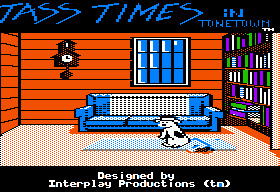

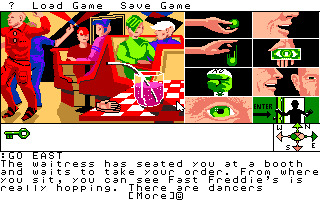



#internet archive#in-browser#apple ii#apple 2#apple iigs#apple 2gs#c64#commodore 64#dos#dos games#apple mac#apple macintosh#game#games#video game#video games#videogame#videogames#computer game#computer games#retro games#retro gaming#retro graphics#game history#gaming history#text adventure#text adventures#1986#1980s#80s
31 notes
·
View notes
Text
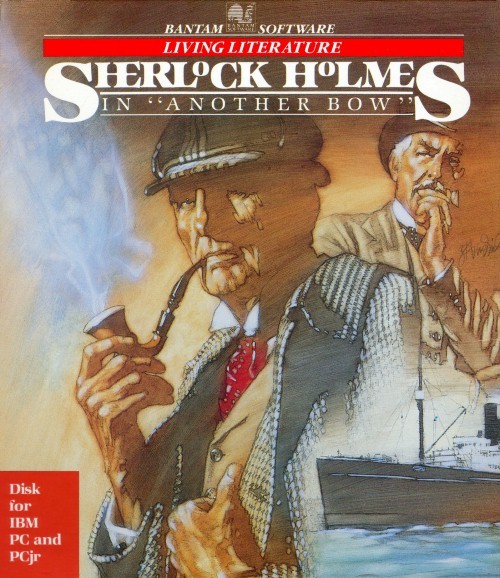


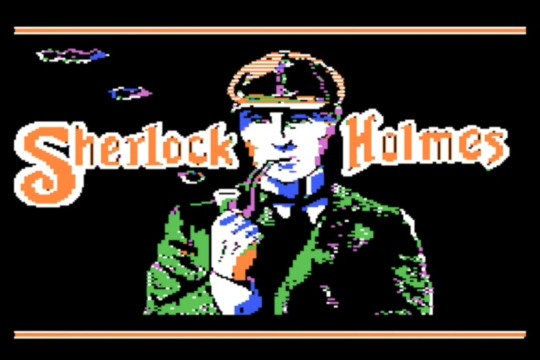



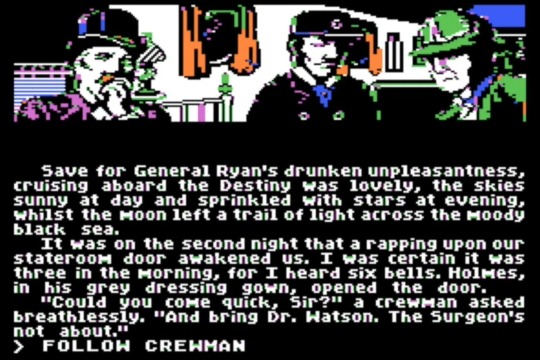

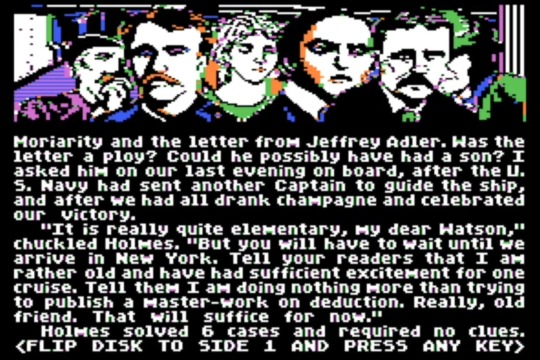
"Sherlock Holmes: Another Bow" video game developed by Imagic and published by Bantam Software for Commodore 64, Apple II, Macintosh, and PC and later rereleased by Firebird (1980-1985)
#theres so many holmes games from the 80s its insane#having trouble with playing some of them so these are screenshots from someone elses playthrough#these are the apple ii graphics#they change quite a bit between devices#theres various uploads of it on the internet archive and other places#sherlock holmes another bow#sherlock holmes: another bow#80s games#apple ii#commodore 64#Macintosh#textual game#Sherlock holmes game#other#vintage video games#retro gaming#vintage video game#sherlock holmes#holmes#bantam software
6 notes
·
View notes
Note
What kind of work can be done on a commodore 64 or those other old computers? The tech back then was extremely limited but I keep seeing portable IBMs and such for office guys.
I asked a handful of friends for good examples, and while this isn't an exhaustive list, it should give you a taste.
I'll lean into the Commodore 64 as a baseline for what era to hone in one, let's take a look at 1982 +/-5 years.
A C64 can do home finances, spreadsheets, word processing, some math programming, and all sorts of other other basic productivity work. Games were the big thing you bought a C64 for, but we're not talking about games here -- we're talking about work. I bought one that someone used to write and maintain a local user group newsletter on both a C64C and C128D for years, printing labels and letters with their own home equipment, mailing floppies full of software around, that sorta thing.
IBM PCs eventually became capable of handling computer aided design (CAD) work, along with a bunch of other standard productivity software. The famous AutoCAD was mostly used on this platform, but it began life on S-100 based systems from the 1970s.
Spreadsheets were a really big deal for some platforms. Visicalc was the killer app that the Apple II can credit its initial success with. Many other platforms had clones of Visicalc (and eventually ports) because it was groundbreaking to do that sort of list-based mathematical work so quickly, and so error-free. I can't forget to mention Lotus 1-2-3 on the IBM PC compatibles, a staple of offices for a long time before Microsoft Office dominance.
CP/M machines like Kaypro luggables were an inexpensive way of making a "portable" productivity box, handling some of the lighter tasks mentioned above (as they had no graphics functionality).
The TRS-80 Model 100 was able to do alot of computing (mostly word processing) on nothing but a few AA batteries. They were a staple of field correspondence for newspaper journalists because they had an integrated modem. They're little slabs of computer, but they're awesomely portable, and great for writing on the go. Everyone you hear going nuts over cyberdecks gets that because of the Model 100.
Centurion minicomputers were mostly doing finances and general ledger work for oil companies out of Texas, but were used for all sorts of other comparable work. They were multi-user systems, running several terminals and atleast one printer on one central database. These were not high-performance machines, but entire offices were built around them.
Tandy, Panasonic, Sharp, and other brands of pocket computers were used for things like portable math, credit, loan, etc. calculation for car dealerships. Aircraft calculations, replacing slide rules were one other application available on cassette. These went beyond what a standard pocket calculator could do without a whole lot of extra work.
Even something like the IBM 5340 with an incredibly limited amount of RAM but it could handle tracking a general ledger, accounts receivable, inventory management, storing service orders for your company. Small bank branches uses them because they had peripherals that could handle automatic reading of the magnetic ink used on checks. Boring stuff, but important stuff.
I haven't even mentioned Digital Equipment Corporation, Data General, or a dozen other manufacturers.
I'm curious which portable IBM you were referring to initially.
All of these examples are limited by today's standards, but these were considered standard or even top of the line machines at the time. If you write software to take advantage of the hardware you have, however limited, you can do a surprising amount of work on a computer of that era.
43 notes
·
View notes
Text
its so wild to me how some of the most important brands in computer history just.
dont exist anymore.
Commodore was responsible for introducing low cost computers to generations of people with it's Vic 20 and C64, and taught countless people with Commodore Pets in classrooms. Now all their assets are just names split between different businesses.
Atari brought gaming home, and some of the first 8 Bit computers as well. Now their name is just a stain on the box of Plug and Play consoles.
Compaq was responsible for the first ever IBM clones, bringing upon the dawn of the modern personal computer and at much cheaper prices than IBM. Now they're a defunct subsidiary of HP.
Tandy was huge in the 8 Bit era, and they popularized a graphics processer that was so much better than any prior graphical solution on MS-DOS computers so much that it became known as Tandy Graphics and Sound, even though it wasnt made by them. Now Radio Shack entirely is gone.
eMachines is pretty much the entire reason computers are mostly cheap now, their aggressive pricing against the market's competition forced the entire industry to cut their prices. Now all they are is a footnote in Apple documentaries about brands that copied the iMac G3.
And like, you'll never have brands like this again. There's no such thing as an "iconic" computer anymore, theyre all reskins of eachother. Commodore had the Vic 20, the C64, the 128, the Amiga, all icons. Atari had the 2600 console and the 400 and 800 computers. Tandy had the TRS 80, Color Computers. Compaq had their portable series. eMachines had the eOne. All icons in their own right, all unique, all special.
I cant think of a tech brand today that anyone would notice was gone. But these. These were special to people. And now theyre gone. Nothing remains.
[i also just realized. Commodore AMIGA. Its the commodore friend. this computer was your friend. and the box of every computer commodore made said welcome to the world of friendly computing. :( ]
#compaq#retro computing#retro gaming#atari#commodore#c64#amiga#commodore amiga#commodore pet#commodore 64#vic 20#commodore vic 20#emachines#tandy#trs 80#radio shack
43 notes
·
View notes
Text
PC Engine - 1552 Tenka Tairan
Title: 1552 Tenka Tairan / 1552天下大乱
Developer/Publisher: ASK Kodansha
Release date: 16 July 1993
Catalogue No.: AKCD3001
Genre: Historical Simulation
Format: Super CD-ROM2


A PC Engine Mouse compatible strategy game set in 16th Century Japan, with gameplay in the same vein as the computer versions of Koei's Nobunaga's Ambition (Nobunaga no Yabou) titles. Presentation is great in 1552 Tenka Tairan. There is a classy opening sequence, funny animated history segments, and even a large number of designers' notes all wrapped up in a GUI eerily similar to Commodore's Amiga Workbench. Graphics are highly attractive given the nature of the game, although the small map screen could have been better, and it looks like it could be a lot of fun. I say 'could be' because the game is chock full of Kanji and fairly impenetrable if you can't understand what is going on. I'd love to have a translated version but as it stands, if you can't read the lingo then you'll have to pass this by - and for that reason, the game remains unrated.


youtube
youtube
youtube
5 notes
·
View notes